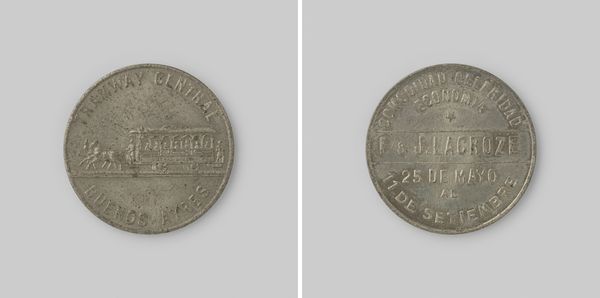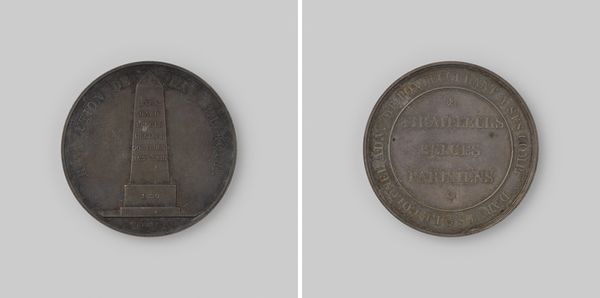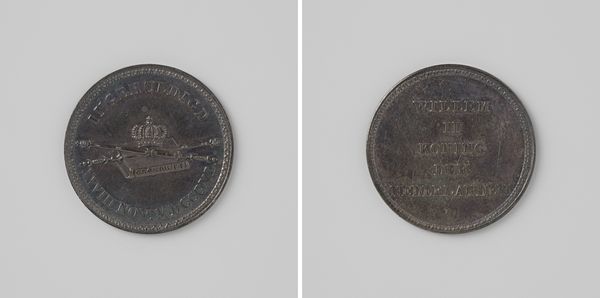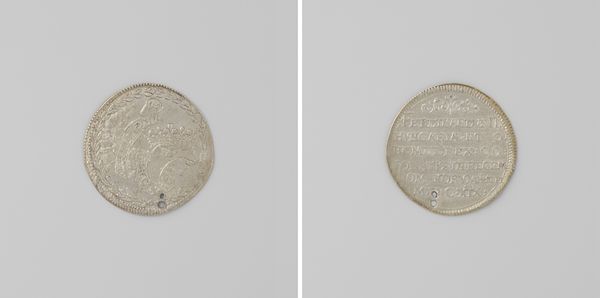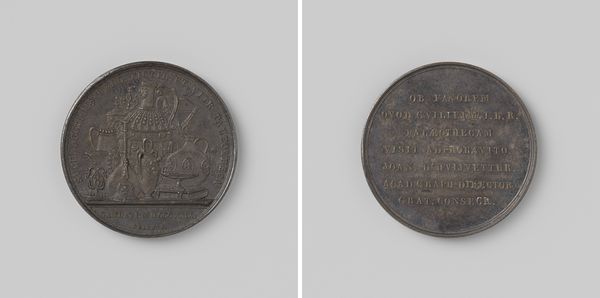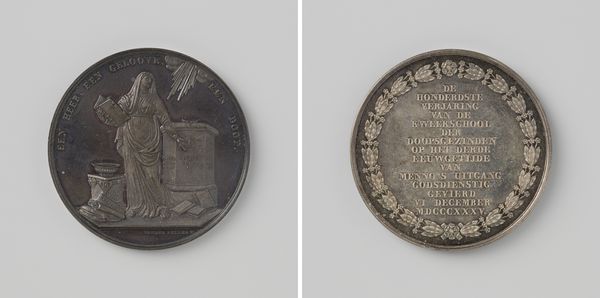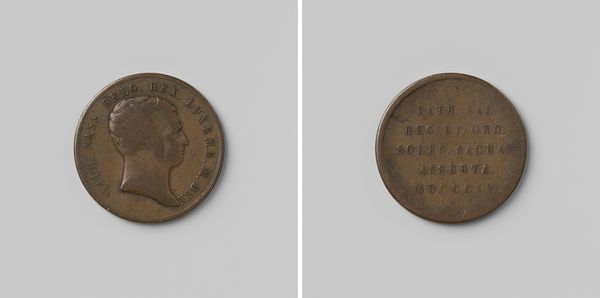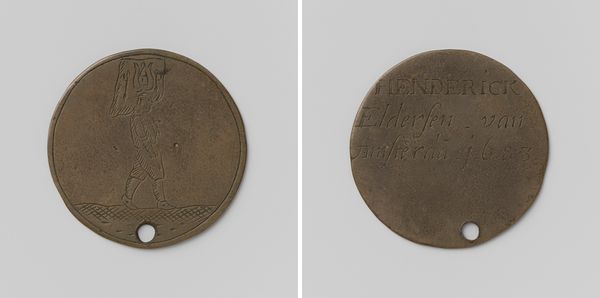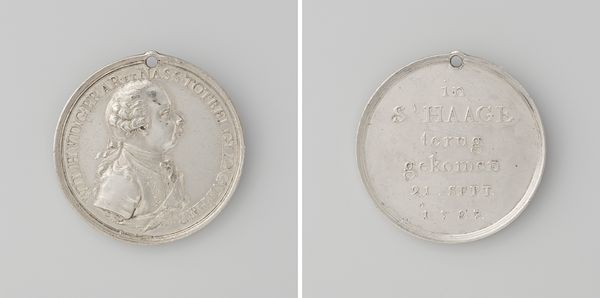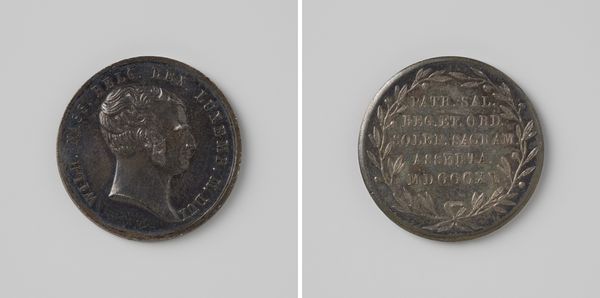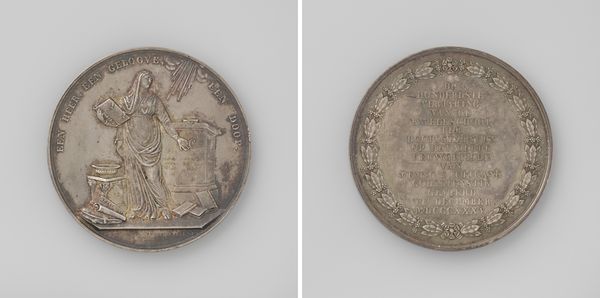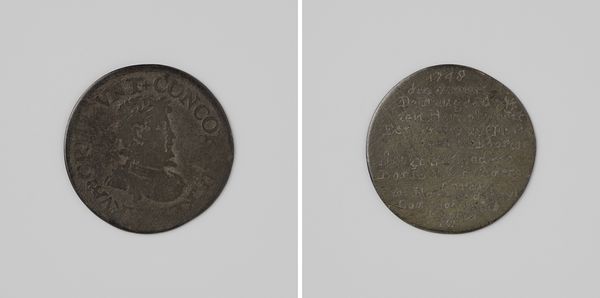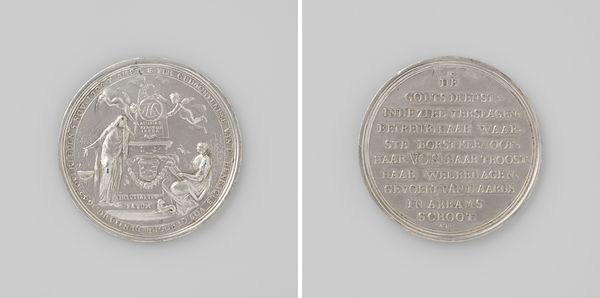
Michal Oginski, gezant in de Nederlanden van Stanislaus II Augustus Poniatowski, koning van Polen 1789
0:00
0:00
print, metal, intaglio, bronze, sculpture, engraving
#
portrait
#
medal
#
neoclacissism
# print
#
metal
#
intaglio
#
bronze
#
sculpture
#
history-painting
#
engraving
Dimensions: diameter 2.3 cm, weight 45 gr
Copyright: Rijks Museum: Open Domain
Curator: Let's turn our attention to a piece dating back to 1789: a bronze intaglio medal that immortalizes Michal Oginski, emissary to the Netherlands from Stanislaus II Augustus Poniatowski, the King of Poland. Editor: There's a striking formality here, isn’t there? The monochrome effect combined with the texture of the metal creates such a palpable sense of gravity and history. Curator: Absolutely. Its existence testifies to the fascinating dynamics of power, diplomacy, and identity in late 18th-century Europe, especially regarding Poland’s efforts to establish a presence on the world stage. How does Oginski's role as a diplomat for a weakening Polish kingdom influence our understanding? Editor: The means by which a person’s identity was cast and immortalized holds significance here. The medal, as a material object, was clearly intended to circulate—a controlled distribution, a means to propagate and solidify Oginski's status. The material—bronze, through engraving—became synonymous with the political. Curator: And considering the historical context, this medal also prompts critical questions around the legacy of colonialism and representation. As an object produced within European power structures, what biases might be present? How do we negotiate a reading of Oginski's representation as an artifact marked by the very political structures he navigated? Editor: Right. The circular format reinforces its functional aspect, it was to be held, touched, passed on. What does it mean to create these miniature sculptures en masse to portray power at a time when royal authority was in crisis, as well as artistic craft and metal production itself? It asks how that labor is involved in this assertion of diplomatic power. Curator: Looking at this, I'm thinking about how artworks of the era actively reinforced political narratives. The clean, classical style further idealizes and elevates Oginski in ways that would serve Poland's political agenda. It begs a deconstruction of the visual strategies used to affirm identities. Editor: Absolutely. We must never disregard these artifacts simply as passive portraits of figures and the social circumstances around those who commissioned it. By drawing together a meticulous analysis of its purpose, method and materiality, this approach has made its history much richer for me. Curator: And I agree, situating Oginski’s medal within intersectional frameworks, acknowledging the power relations inherent to its production, reception and broader socio-political implications helps foster dialogue around how identity and nationhood continue to be mediated through visual culture today.
Comments
No comments
Be the first to comment and join the conversation on the ultimate creative platform.
